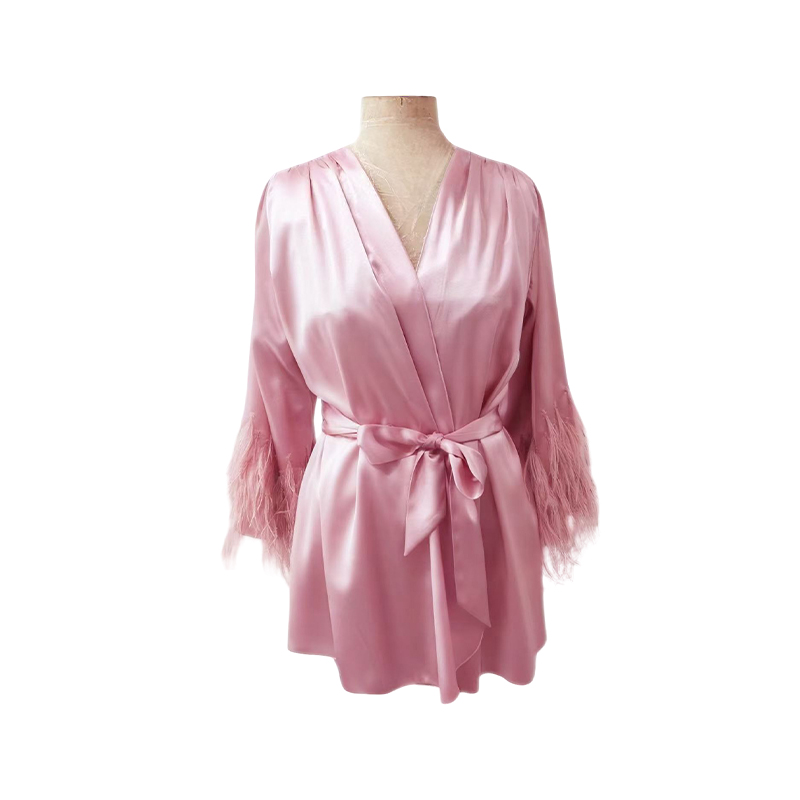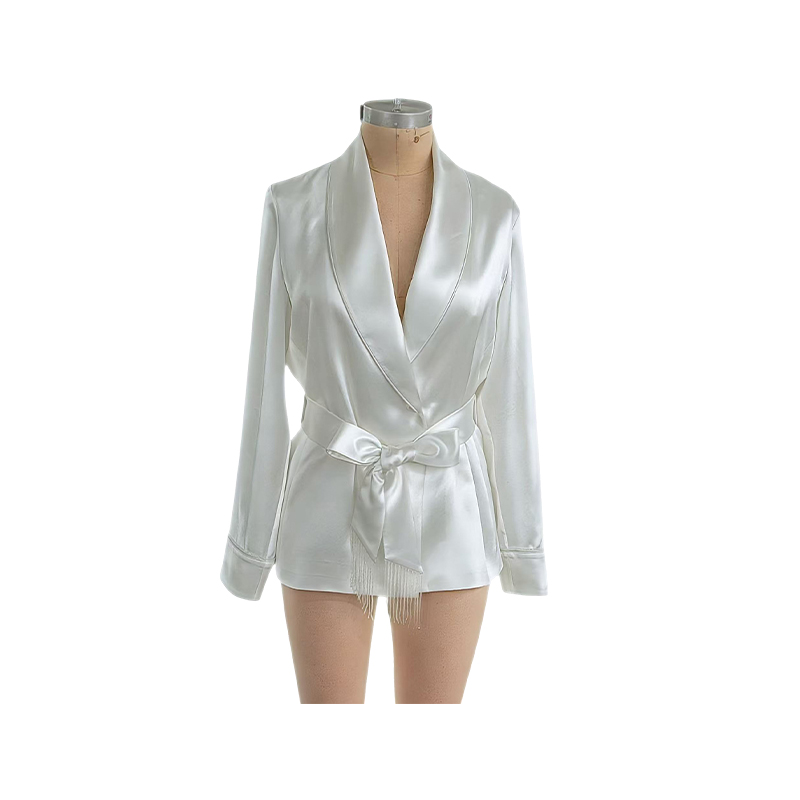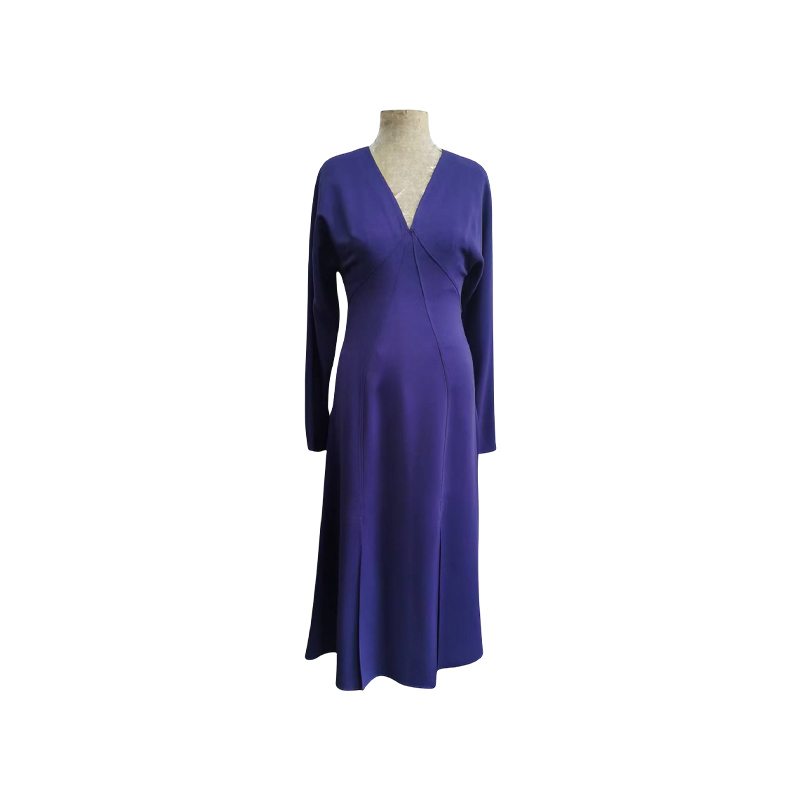How does the concentration of reactive dyes affect color saturation and color fastness in the dyeing process of silk women's pajamas?
Release Time : 2025-09-11
In the dyeing process of silk women's pajamas, reactive dye concentration exhibits a significant bidirectional regulatory effect on color saturation and color fastness. This mechanism operates throughout the entire process of dye adsorption, diffusion, fixation, and finishing. Reactive dye concentration directly influences the amount of dye adsorbed on the fiber surface. When silk fibers are immersed in the dye solution, dye molecules accumulate on the fiber surface through physical and chemical adsorption, forming a dynamic adsorption equilibrium. In low-concentration dye solutions, the amount of dye adsorbed on the fiber surface is limited, making it difficult to form a continuous color coating, resulting in insufficient color saturation. As the dye concentration increases, the number of dye molecules adsorbed on the fiber surface increases exponentially, enhancing color saturation. However, when the dye concentration exceeds the fiber's adsorption saturation value, the excess dye cannot be absorbed by the fiber and remains mechanically attached to the fiber surface, forming a floating layer.
The presence of this floating layer has a dual impact on color fastness. First, unfixed floating dye is easily dislodged by external forces such as friction and washing, directly leading to decreased wet rubbing fastness and soaping fastness. On the other hand, floating dyes absorb specific wavelengths of light, altering the spectral reflectance characteristics of the dyed fabric, causing the actual color to deviate from the target color and affecting color purity. Therefore, the dyeing process for silk women's pajamas requires optimizing dye concentration to balance color saturation and the amount of floating color.
Reactive dye concentration plays a key role in the efficiency of dye-fiber covalent bond formation. Reactive dyes undergo nucleophilic substitution reactions with amino and hydroxyl groups in silk fibers via vinylsulfone or monochlorotriazine groups, forming stable covalent bonds. At low concentrations, the diffusion resistance of dye molecules within the fiber is low, but the number of dye molecules participating in the reaction per unit volume is limited, resulting in a low fixation rate. In high-concentration dye solutions, dye molecules form a high concentration gradient on the fiber surface, promoting diffusion into the fiber. However, excess dye intensifies hydrolysis, producing inactive hydrolyzed dyes. Hydrolyzed dyes not only fail to participate in the fixation reaction but also occupy adsorption sites on the fiber surface, hindering the binding of reactive dyes to the fiber, ultimately reducing the fixation rate.
Dye concentration significantly affects the light fastness of dyed fabrics. The light fastness of reactive dyes depends primarily on the structure of the dye matrix, but dye concentration affects the rate of light fading by altering the dye's aggregation on the fiber. High dye concentrations cause dye molecules to form large aggregates on the fiber, reducing the surface area exposed to light per unit weight and lowering the efficiency of light energy absorption, thus slowing the light fading reaction. Low dye concentrations cause the dye to be dispersed within the fiber as a single molecule, with each molecule absorbing light energy with equal probability, accelerating the light fading reaction. Furthermore, the light fastness of floating dyes in silk women's pajamas is significantly lower than that of fixed reactive dyes. The residual floating color caused by high dye concentrations further reduces overall light fastness.
In dyeing practice, dye concentration should be determined based on the desired color and intended use of silk women's pajamas. For light-colored products, using low dye concentrations can reduce floating color and improve color fastness, but this requires extending the dyeing time or increasing the temperature to promote dye diffusion. For dark-colored products, a step-by-step dyeing method is used, starting with a low-concentration base dye and then gradually increasing the concentration to deepen the color. Fixing agents are also used to block the water-soluble groups of floating dyes and improve wet fastness.
Finishing processes can modulate the dye concentration effect of silk women's pajamas. Treating silk fibers with cationic modifiers introduces positively charged centers, enhancing the fiber's adsorption capacity for anionic reactive dyes and increasing the fixation rate at the same dye concentration. Cross-linking agents can form a three-dimensional network structure on the fiber surface, encapsulating unfixed dye molecules and reducing floating color loss. These finishing techniques effectively expand the applicable dye concentration range and provide process support for achieving both high color saturation and high color fastness.







